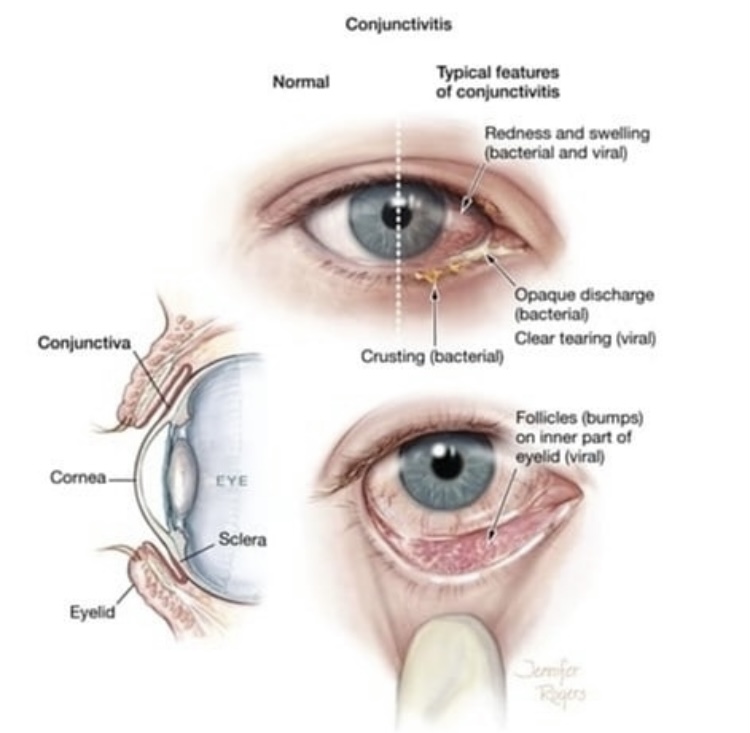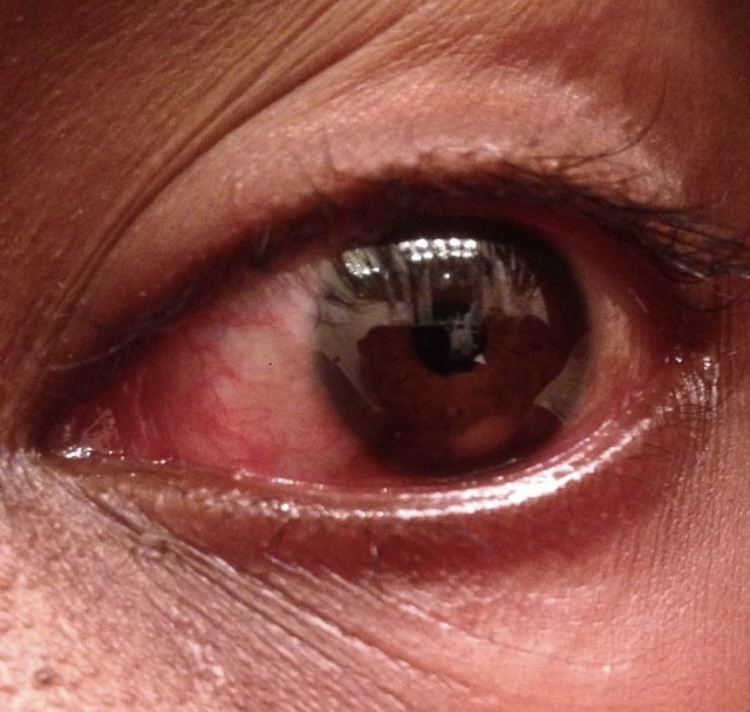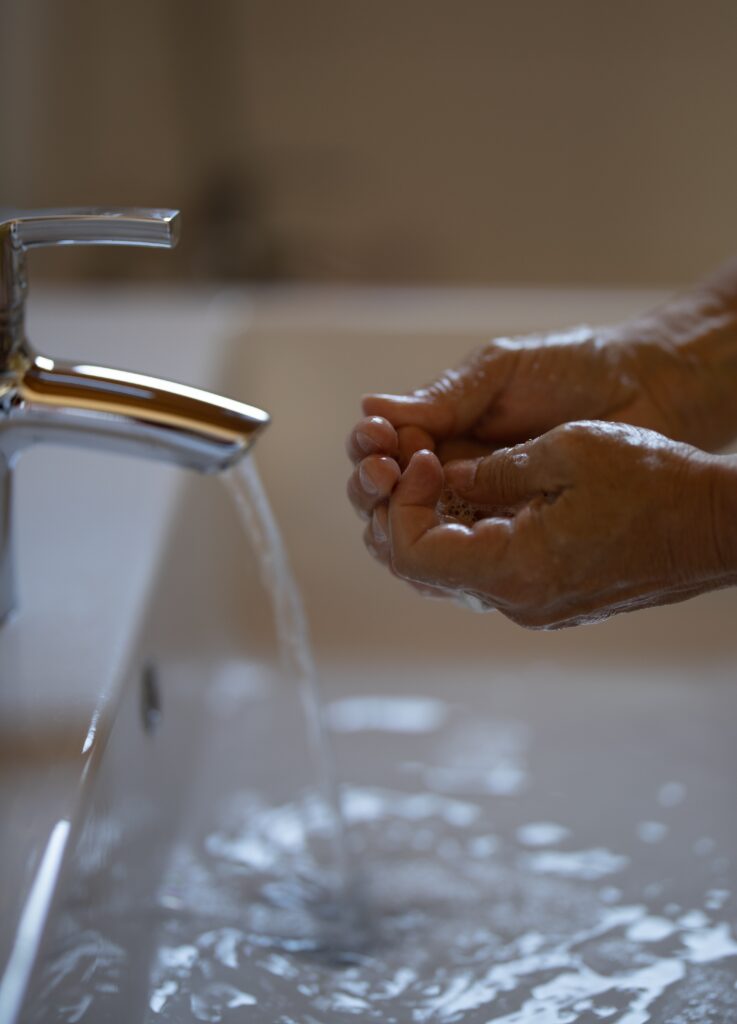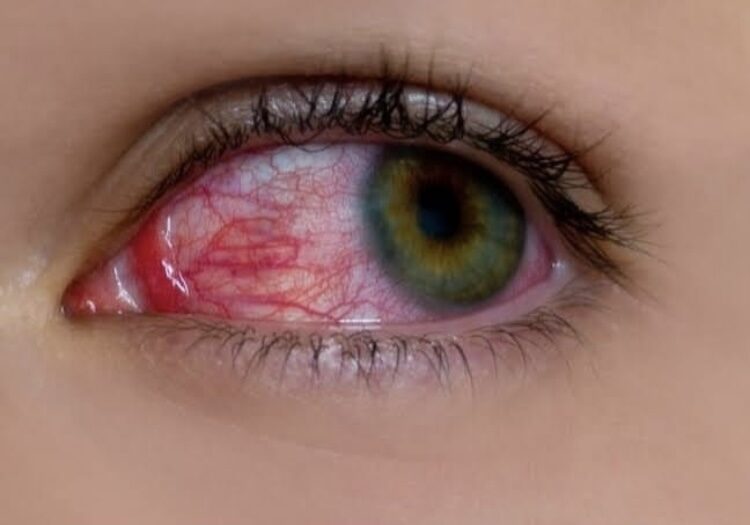Conjunctivitis, more commonly known as pink eye, is a highly contagious eye infection that affects millions of people each year. Unfortunately, there are many myths and misconceptions surrounding this common condition. In this blog post, we’ll be debunking the top 10 most common myths about conjunctivitus, or pink eye. Get ready to learn the truth about this common eye infection and how to best protect yourself from it.
Table of Contents
1) Conjunctivitis is not caused by poor hygiene
It’s one of the biggest myths surrounding pink eye. Despite its reputation as a contagious eye disease, it is not caused by poor hygiene. It can be caused by a variety of factors, including allergies, viruses, bacteria, and even irritants like chlorine in swimming pools. While good hygiene habits, such as washing your hands often and avoiding rubbing your eyes, can help to reduce your risk of contracting certain types of eye diseases, they will not prevent all types of conjunctivitis. It’s important to note that it is highly contagious, but it’s spread primarily through contact with an infected person or their discharge, rather than through poor hygiene.

2) You cannot catch conjunctivitis from someone else
Contrary to popular belief, conjunctivitis, also known as pink eye, is not contagious. You cannot catch it from someone else or give it to someone else through contact or sharing items. It is a common eye disease caused by either a viral or bacterial infection, allergies, or irritants in the air. It is highly contagious when caused by a virus, but it can only be spread through contact with the mucus secretions from an infected person’s eyes, nose, or throat. Bacterial and allergic forms of conjunctivitis are not contagious and cannot be spread from person to person.
3) Swimming in chlorinated water will not help treat conjunctivitis
It is a common misconception that swimming in chlorinated water can help treat conjunctivitis or pink eye. This is not true and it is harmful to your health. Chlorinated water does not kill bacteria or viruses that cause it, and it can even aggravate the condition. Chlorine is an irritant that can further inflame the eyes, resulting in worse symptoms. In addition, chlorine can strip away beneficial oils from the skin, leaving it feeling dry and irritated.
If you have it, the best course of action is to avoid swimming in chlorinated water. Instead, you should contact your doctor for the proper diagnosis and treatment. It can be caused by either a virus or bacteria, so it is important to find out which type you have to receive the right treatment. Depending on the cause, your doctor may prescribe antibiotics, antiviral medication, or other forms of medication. If the conjunctivitis is caused by allergies, they may recommend anti-allergy medications or eye drops to help manage the condition.
In summary, swimming in chlorinated water will not help treat pink eye. It can even make your symptoms worse, so it is best to avoid this if you are suffering from pink eye. If you suspect you have conjunctivitis, contact your doctor for the correct diagnosis and treatment.
4) Wearing contact lenses does not necessarily increase your risk for developing conjunctivitis
Despite popular belief, wearing contact lenses does not increase your risk of developing conjunctivitis. While contact lenses can irritate the eye, the risk of developing conjunctivitis from contact lens wear is very low.
This myth most likely originated from the fact that contact lenses can be a source of bacteria and viruses that can lead to conjunctivitis. Bacterial conjunctivitis, for example, is caused by a bacterial infection of the eye, which can happen when bacteria from unclean hands or contact lenses come into contact with the eyes. To avoid this, it is important to always follow the instructions on how to clean and store your contact lenses correctly.
Also, people who wear contact lenses are more prone to dry eyes than those who do not wear them. This can result in redness and itching, which can be mistaken for conjunctivitis. However, the symptoms of dry eyes can often be alleviated with lubricating eye drops or adjusting the amount of time you wear your contacts.
In conclusion, while it is important to take extra precautions when using contact lenses, they do not increase your risk of developing conjunctivitis. As long as you follow the instructions on how to clean and store your contact lenses correctly, you should have no problems.

5) Conjunctivitis is not always pink in colour
Although it is commonly known as ‘pink eye’, conjunctivitis does not always appear as a pink or red color. In fact, the color of the eye can vary depending on the cause of the infection. It is caused by a virus is usually seen with a watery discharge and yellowish-green discharge coming from the eyes, while conjunctivitis caused by bacteria typically has a thicker and more white discharge. Allergic conjunctivitis is typically marked by swollen, itchy, and red eyes. Knowing the cause of it can help your doctor determine which type of treatment you will need.
If you are experiencing any eye irritation or discolouration, it is important to contact your doctor for an evaluation and to get an accurate diagnosis. It is a highly contagious condition that can be passed from person to person, so it is important to take precautions to prevent the spreading of the infection. Washing your hands often and avoiding contact with those who have been diagnosed with conjunctivitis can help stop the spread of this contagious disease.

6) Conjunctivitis is not only caused by viruses
Conjunctivitis, commonly referred to as pink eye, is an inflammation of the conjunctiva, the thin membrane that covers the whites of the eyes and lines the inner eyelids. Although it is most often caused by viruses, there are several other potential causes, including bacteria, allergies, foreign objects, and chemical or environmental irritants.
Viral conjunctivitis is usually characterized by redness, itchiness, tearing, and sensitivity to light. It can be caused by any number of viruses, such as adenovirus, herpes simplex virus, and enteroviruses. Viral conjunctivitis typically resolves on its own without treatment.
Bacterial conjunctivitis is caused by bacteria such as staphylococcus or streptococcus and is more serious than viral conjunctivitis. Symptoms of bacterial conjunctivitis include redness, itching, tearing, discharge from the eye, and swelling of the eyelid. Bacterial conjunctivitis may need to be treated with antibiotics prescribed by your doctor.
Allergic conjunctivitis is an inflammatory reaction to allergens such as pollen, dust mites, animal dander, or certain medications. Symptoms of allergic conjunctivitis include redness, itching, tearing, and burning. Treatment for allergic conjunctivitis usually involves taking antihistamines or using anti-allergy eyedrops.
Finally, chemical or environmental irritants such as smog, smoke, and chlorine in swimming pools can also cause it. Symptoms are similar to those of allergic conjunctivitis and treatment usually involves avoiding the offending agent.
To summarise, it can be caused by many different agents such as viruses, bacteria, allergies, foreign objects, and chemical or environmental irritants. If you are experiencing symptoms of pink eye, it is important to see your doctor so they can diagnose the cause and provide the appropriate treatment.

7) Bacterial conjunctivitis is not always cured with antibiotics
Contrary to popular belief, bacterial conjunctivitis is not always cured with antibiotics. The type of bacteria causing the infection will determine if antibiotics are the appropriate treatment. For example, staphylococcus and streptococcus bacteria are usually treated with antibiotics, whereas chlamydia bacteria often require a different approach. If your doctor suspects that your conjunctivitis is caused by a bacterial infection, they will usually prescribe a course of antibiotics as well as eye drops. In some cases, the infection may resolve without antibiotics if the underlying cause is addressed.
It’s important to note that antibiotics should only be used when it is necessary, as overuse can lead to antibiotic resistance and make the infection more difficult to treat. If you are prescribed antibiotics, be sure to follow your doctor’s instructions and complete the course. Otherwise, you could be at risk of the infection returning or becoming worse.
8) Allergies cannot be cured, but they can be managed
Allergies are an immune system reaction to a foreign substance that the body perceives as a threat. Allergies cannot be cured, but they can be managed with lifestyle changes and medications. Some common allergy medications include antihistamines, decongestants, and corticosteroids.
Antihistamines work by blocking the effects of histamine, which is released by the body during an allergic reaction. Decongestants reduce inflammation and congestion in the nose and throat caused by allergies. Corticosteroids reduce inflammation throughout the body.
In addition to medications, other lifestyle changes can help manage allergies. Identifying and avoiding allergens is an important step in reducing allergic reactions. If you know what you’re allergic to, you can take steps to avoid it.
It’s also important to keep your home free of allergens by regularly cleaning and vacuuming. Allergy sufferers should also try to reduce their exposure to pollen and other airborne allergens by keeping windows closed and using air conditioners.
Allergies cannot be cured, but they can be managed with lifestyle changes and medications. Keeping track of your symptoms and talking to your doctor about the best treatment options can help you find relief from your allergies.

9) Washing your hands frequently will help prevent the spread of conjunctivitis
Washing your hands is an effective way to prevent the spread of conjunctivitis, also known as pink eye. It’s important to note that conjunctivitis can be caused by either bacteria or viruses. Therefore, frequent hand washing with soap and water will help reduce the risk of spreading it to others.
When washing your hands, it’s important to use soap and water and scrub your hands for at least 20 seconds. If soap and water are not available, use an alcohol-based hand sanitiser. Be sure to rub the sanitiser over all surfaces of your hands, including between fingers and around fingernails.
It’s also important to avoid touching your eyes, nose, or mouth with unwashed hands. Doing so increases the chance of getting an infection or spreading conjunctivitis to other parts of your body or to someone else. Additionally, be sure to throw away any tissues you used to wipe away discharge from your eyes and wash your hands afterwards.
In summary, washing your hands frequently with soap and water can help reduce the risk of spreading it to others. If soap and water are not available, use an alcohol-based hand sanitiser. Additionally, avoid touching your eyes, nose, or mouth with unwashed hands and throw away any tissues you used to wipe away discharge from your eyes. By following these simple steps, you can help protect yourself and others from getting it.

10) There is no one-size-fits-all treatment for conjunctivitis
When it comes to treating it, there is no one-size-fits-all approach. Depending on the type of conjunctivitis you have, the treatment option may vary. Allergic conjunctivitis, for example, is often treated with antihistamines and mast cell stabilizers, while bacterial conjunctivitis is usually treated with antibiotics. Viral conjunctivitis is typically self-limited and will usually resolve on its own without any medical intervention.
It is important to understand that the treatments used for it are specific to the type of conjunctivitis and cannot be interchanged. While antibiotics can be effective in treating bacterial conjunctivitis, they are not recommended for the treatment of viral conjunctivitis. Similarly, antihistamines and mast cell stabilizers can help manage allergic conjunctivitis but should not be used to treat bacterial or viral conjunctivitis.
To make sure you receive the best possible treatment for your particular case of conjunctivitis, it is important to visit an eye care professional for a proper diagnosis and treatment plan. Your doctor will be able to determine the type of conjunctivitis you have and provide you with the most suitable treatment option for your case.

Conclusion
In conclusion, conjunctivitis is an eye condition that affects people of all ages. However, there are several myths surrounding it that can lead to misunderstanding and unnecessary worry. It is important to dispel these myths and understand the facts about the causes, symptoms, and treatment of conjunctivitis. By seeking proper medical advice and taking appropriate precautions, individuals can manage this condition effectively and reduce the risk of transmission to others.




